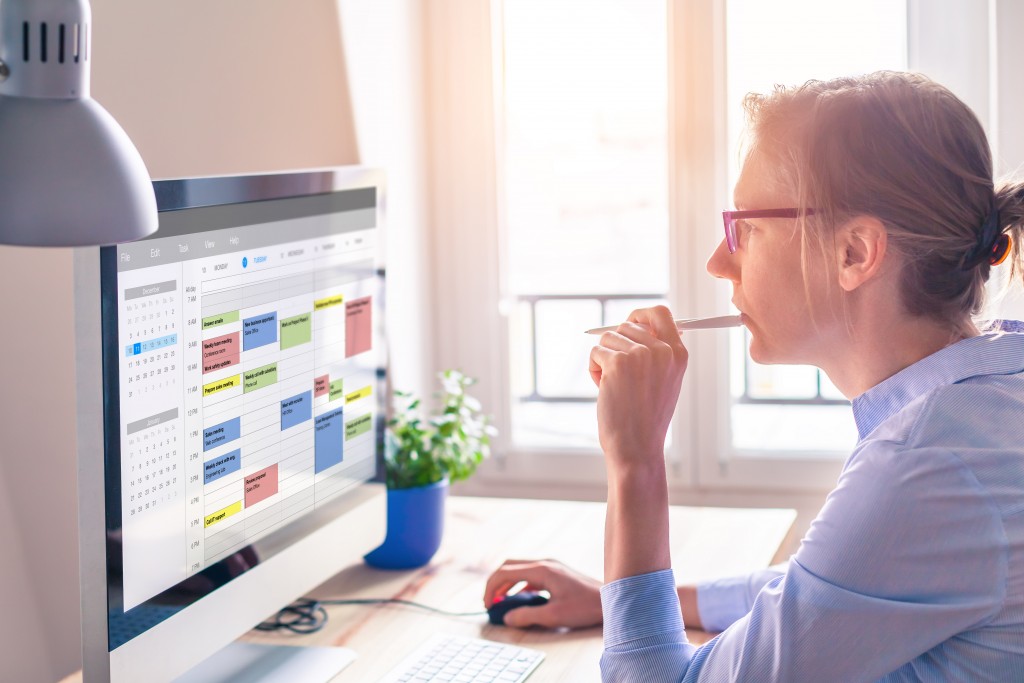If there’s something we’ve learned from working from home, it’s that having a designated workspace works wonders on your productivity. You can concentrate on your task without worrying about any unnecessary distractions. There are a few ground rules for this workspace. It has to be neat; it needs to have good lighting and chairs that are comfortable — but not too comfortable — and it needs to look professional.
This is why it’s difficult to get work done in bed or on the couch. We’re too relaxed in those spaces, and we don’t associate them enough with work. Having a good-looking office space can increase productivity and make you look professional in front of your clients, guests, and employees. Here are some helpful tips for designing your office for productivity and appearance, whether you’re working at home or the office.
Get good furniture
Furniture is the main contributor to a room’s appearance. Make sure your features are both functional and decorative. Laser-cut design furniture pieces are designed to be such. If you have the extra funding to shell out for your office, you can even customize the engraved patterns or cut into your furniture pieces.
Most importantly, invest in good seating. Get chairs that offer lumbar support or provide your employees with a pillow or two to avoid lower back pain.
Make the reception area look good
This is important if you’re working at an office. Your reception area is part of your office’s facade — even if it’s inside the building. This is where you have clients, visitors, and job applicants wait, so it has to look good and professional. Make sure there’s a comfortable place for your guests to sit. Have a coffee table with coffee table books for them to peruse.
Lighting is everything
The lighting of your environment has a big impact on your mood and productivity. Natural light is the best solution, especially as it aids in the production of vitamin D. Make the most out of your windows and let the light flow in. Light — but especially natural light — is linked to our circadian rhythms, which helps configure our sleep cycle and energy levels.
Lighting is also a determinant for whether you’ll get headaches or eye strain over a long workday. The best way to arrange the desks is so that the light hits them from the side. If it hits them from the back, it may cause a glare on the screen and lead to eye strain. If the light is right ahead of them, it could blind them with brightness.
Have a quiet, private space
 This is an important factor in any workspace. While it’s common knowledge that a noisy space generally isn’t productive, research has shown that total silence isn’t conducive to good work. Find what ambient noise or music works for you.
This is an important factor in any workspace. While it’s common knowledge that a noisy space generally isn’t productive, research has shown that total silence isn’t conducive to good work. Find what ambient noise or music works for you.
If you work at an on-site office, have spaces set aside for collaborative work so that meetings don’t disrupt employees that aren’t involved. It would also help if you had cubicles to give your employees privacy and space.
If you’re working from home, make sure you’re working in a space where you’re relatively undisturbed when having Zoom meetings. As charming as the famous BBC dad video is, it can be embarrassing and disruptive to have your kids or housemates barge during a virtual meeting.
Invite nature in
Having plants in your workspace is always a good idea. They look good and add extra life to your office — literally — and research has found that they can increase productivity by up to 15 percent. They also benefit physical health by oxygenating the surrounding air. Research plants that can thrive indoors and require minimal watering. Place them near the windows to give them the sunlight they need.
Experiment with color psychology
Color psychology studies how we are conditioned to react psychologically to colors. But different people react to colors in different ways, so play around with this. When designing your company’s office, experiment with different colors to see which ones have the best effect on your employees’ mood and productivity. If you’re at home, your space is for you alone, so know what colors work best for you.
Having a space that’s meant for productivity might be your best tool. Fill the space with work-related things; avoid adding stuff that can distract you. Make sure the space is well-lit, relatively quiet, and ergonomically furnished. If you’re working in an on-site office, you’ll benefit from having a well-decorated workplace to boost your mood as well as your productivity.







